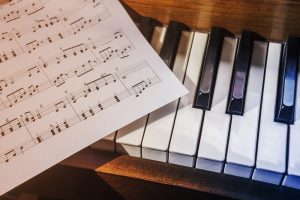Table of Contents
Come join us now, and enjoy playing your beloved music and browse through great scores of every level and styles!
Can’t find the songbook you’re looking for? Please, email us at: sheetmusiclibrarypdf@gmail.com We’d like to help you!
David Baker – How To Play Bebop (Vol. 1 to 3)
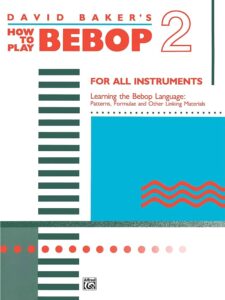
Best Sheet Music download from our Library.
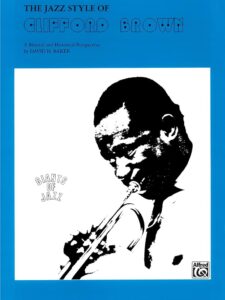



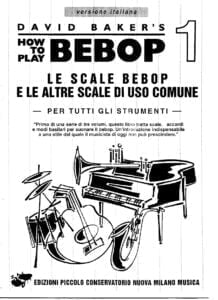
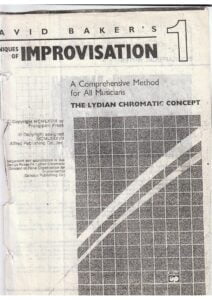


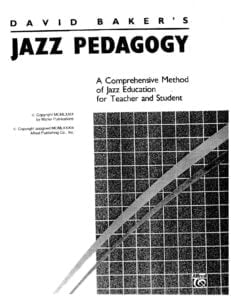

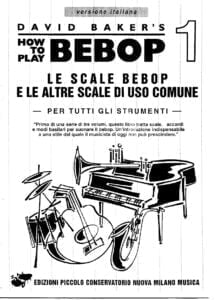

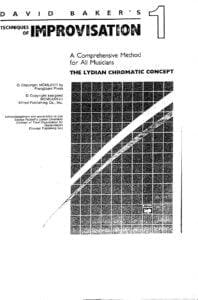
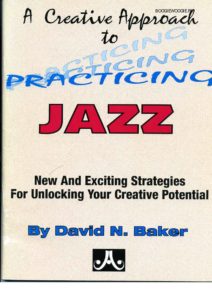
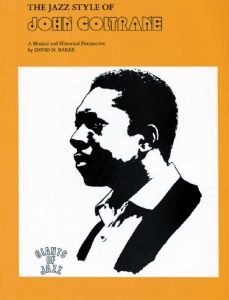
Browse in the Library:
Or browse in the categories menus & download the Library Catalog PDF:
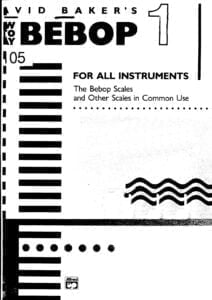
Please, subscribe to our Library.
If you are already a subscriber, please, check our NEW SCORES’ page every month for new sheet music. THANK YOU!
David Baker: The Architect of Jazz Education and a Master Musical Polymath
David Baker wasn’t just a musician; he was a force of nature who fundamentally reshaped the landscape of jazz, not only through his own artistry but through the tireless construction of its academic foundation. A virtuoso trombonist turned pioneering cellist, a prolific and boundary-crossing composer, a revered pedagogue, and a passionate historian, Baker’s legacy is as vast and multifaceted as the music he dedicated his life to.
Early Life and Formative Years (1931-1950s):
Born David Nathaniel Baker Jr. on December 21, 1931, in Indianapolis, Indiana, music was ingrained early. Both parents were educators, fostering an environment of learning. He began on piano but switched to trombone in high school, quickly demonstrating prodigious talent. Indianapolis, a vibrant jazz hub in the 1940s, provided fertile ground. He absorbed the sounds of touring big bands and local legends, playing alongside future luminaries like J.J. Johnson and Wes Montgomery in high school ensembles. After graduating from Crispus Attucks High School, he studied music education at Indiana University (IU) Bloomington (BMus, 1953), followed by graduate studies in music composition.
The Performing Career: Trombone Virtuosity and the Avant-Garde:
The 1950s and early 60s saw Baker emerge as one of the most exciting trombonists in modern jazz. His technique was formidable, his ideas harmonically adventurous. He became a pivotal figure in the burgeoning Third Stream movement – the conscious blending of jazz improvisation with classical composition and forms.
- The George Russell Crucible: His most significant association during this period was with visionary composer/theorist George Russell. As a core member of Russell’s groundbreaking sextet and orchestra (c. 1958-1964), Baker was instrumental in bringing Russell’s complex Lydian Chromatic Concept of Tonal Organization to life. Albums like Ezz-thetics (1961) and Stratusphunk (1960) showcase Baker’s blistering solos and deep understanding of Russell’s revolutionary harmonic frameworks. This period placed him at the cutting edge of jazz innovation alongside Eric Dolphy, Don Ellis, and Steve Swallow.
- Other Collaborations: He also performed and recorded with heavyweights like Quincy Jones, Maynard Ferguson (playing lead trombone in his band for a period), Stan Kenton, and Lionel Hampton, demonstrating remarkable versatility across big band and smaller group settings.
The Pivot: Adversity and Reinvention (Early 1960s):
Tragedy struck in the early 1960s. A severe jaw injury sustained in a car accident made playing the trombone physically impossible. For most musicians, this would have been a career-ending catastrophe. For David Baker, it was a catalyst for profound reinvention.
- Embracing the Cello: Undeterred, Baker turned to the cello. He didn’t merely adapt; he pioneered. He developed unique techniques, including percussive effects, harmonics, and a highly vocalized, blues-inflected approach that made the cello a legitimate and expressive jazz voice. He essentially created the vocabulary for jazz cello as a solo instrument, paving the way for future generations.
- Focus on Composition: Simultaneously, this period saw an explosion in his compositional output. Freed from the demands of touring as a trombonist, he poured his musical intellect into writing. His compositions began to synthesize his deep jazz roots with sophisticated classical structures and techniques, reflecting the Third Stream ideals he had explored with Russell.
The Prolific Composer: Bridging Worlds:
David Baker’s catalogue is staggering – over 2,000 compositions spanning virtually every genre:
- Jazz Orchestra & Ensembles: He wrote extensively for big band (including the Smithsonian Jazz Masterworks Orchestra, which premiered many works) and small jazz groups, often featuring his signature cello. Works like “Roots II,” “The Jazz Epistles,” and his “Ellingtones” series paid homage while showcasing his own complex voice.
- Chamber Music: He produced a vast body of chamber music, often blending classical instruments with jazz improvisation or sensibility. String quartets, woodwind quintets, and pieces for mixed ensembles abound.
- Symphonic Works: He composed concertos (for cello, trombone, violin, bassoon, etc.), symphonies, and tone poems for symphony orchestra, frequently incorporating jazz soloists or improvisational sections. These works demanded high-level virtuosity from both classical players and improvising soloists.
- Film Scores and Ballet: His compositional reach extended to scoring documentaries and composing for ballet companies.
- Style: Baker’s compositional style is characterized by intricate counterpoint, sophisticated harmonic language (drawing on both jazz and 20th-century classical techniques), rhythmic vitality, deep blues feeling, and a masterful sense of form and development. He seamlessly integrated improvisation into formally structured contexts.
The Indispensable Educator: Building the Ivory Tower of Jazz:
While his performing and composing alone would secure his legacy, David Baker’s most profound and lasting impact was as an educator. He returned to Indiana University in 1966 and embarked on a mission that would transform jazz education globally.
- Founding the IU Jazz Studies Program: Baker virtually single-handedly built the Indiana University Jazz Studies program from the ground up. Starting small, he fought institutional skepticism to establish jazz as a legitimate academic discipline worthy of rigorous study alongside classical music.
- Curriculum Architect: He developed comprehensive curricula that covered performance (all instruments), improvisation, composition, arranging, history, and pedagogy. His program emphasized both technical mastery and deep historical understanding.
- The Textbook Titan: Recognizing the lack of pedagogical materials, Baker authored an astonishing array of highly influential textbooks and method books. Titles like Jazz Pedagogy: A Comprehensive Method of Jazz Education for Teacher and Student, Ear Training for Jazz Musicians, David Baker’s Modern Concepts in Jazz Improvisation, and How to Play Bebop (3 volumes) became the standard texts in universities and conservatories worldwide. These books codified jazz language and practice in an accessible, systematic way.
- Master Teacher: As a professor, Baker was legendary. He demanded excellence, fostered individual voices, and possessed an encyclopedic knowledge that he shared generously. His teaching extended far beyond IU through countless clinics, workshops, and residencies internationally.
- Smithsonian Jazz Masterworks Orchestra: As Artistic Director and Conductor of this prestigious ensemble from its inception in 1990 until his death, Baker played a crucial role in researching, preserving, and performing historically significant big band repertoire.
- Mentor to Generations: His students form a who’s who of jazz: Randy Brecker, Michael Brecker (who credited Baker with transforming his approach), Peter Erskine, Jim Beard, Chris Botti, Jeff Hamilton, Shawn Pelton, and countless others leading diverse careers in performance, composition, and education.
The Scholar and Advocate:
Baker was deeply committed to jazz history and advocacy:
- Oral History: He conducted extensive, invaluable oral history interviews with jazz masters.
- Jazz Advocacy: He tirelessly promoted jazz as America’s classical music, serving on panels for the NEA and working with organizations like the International Association for Jazz Education (IAJE).
- Breaking Barriers: As an African American man building a field in predominantly white academic institutions during a turbulent era, his success was a significant achievement in breaking down barriers.
Legacy and Honors:
David Baker received numerous accolades, including:
- NEA Jazz Master Fellowship (2000) – the nation’s highest jazz honor.
- American Jazz Masters Award (1994).
- Grammy nominations for his compositions.
- Pulitzer Prize nomination for his “Cello Concerto”.
- DownBeat Magazine Hall of Fame (Educator).
- Honorary doctorates from multiple institutions.
He passed away on March 26, 2016, in Bloomington, Indiana, survived by his wife, Lida, and children, Brent and April.
The Enduring Impact:
David Baker’s legacy is monumental and pervasive:
- The Institutionalization of Jazz: He was arguably the central figure in establishing jazz studies as a respected academic discipline within major universities worldwide. The model he created at IU became the blueprint.
- Pedagogical Foundation: His textbooks remain essential, shaping how jazz is taught to millions of students. He provided the tools to understand and master the language.
- The Jazz Cellist: He invented the vocabulary for jazz cello as a solo voice.
- A Bridge Between Worlds: His compositions and performances consistently demonstrated the deep connections and possibilities between jazz and classical traditions.
- Generations of Musicians: His direct and indirect influence, through his teaching and writings, permeates the entire contemporary jazz world. Countless professional musicians owe their understanding and craft to his pedagogical genius.
David Baker was more than a musician; he was an architect. He constructed the educational infrastructure that sustains and propels jazz forward. He was a master builder of musical minds, a composer of boundless imagination, and a performer who turned adversity into groundbreaking innovation. His life’s work ensured that the rich legacy of jazz would not only be preserved but rigorously studied, understood, and innovated upon by generations to come. He remains the indispensable pillar of modern jazz education and a towering figure in American music.
Selected discography
- Steppin’ Out (Liscio, 1998)
- How to Learn Tunes (2000)
With John Lewis
- The Golden Striker (Atlantic, 1960)
With George Russell
- Jazz in the Space Age (Decca, 1960)
- George Russell Sextet at the Five Spot (Decca, 1960)
- Stratusphunk (Riverside, 1960)
- George Russell Sextet in K.C. (Decca, 1961)
- Ezz-thetics (Riverside, 1961)
- The Stratus Seekers (Riverside, 1962)
David Baker – Screamin’ Meemies
Browse in the Library:
Or browse in the categories menus & download the Library Catalog PDF:
